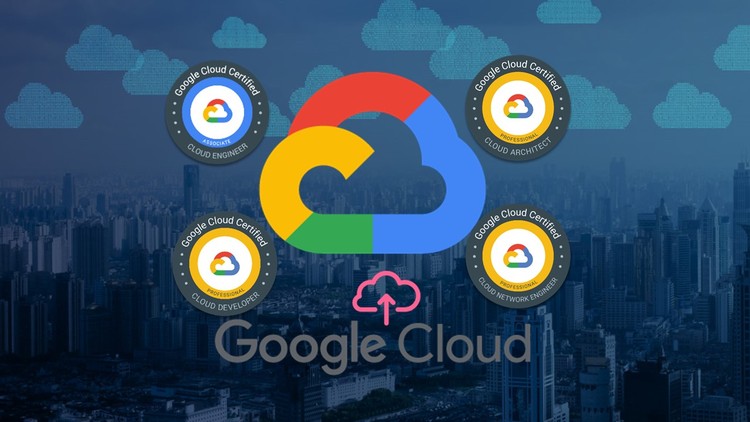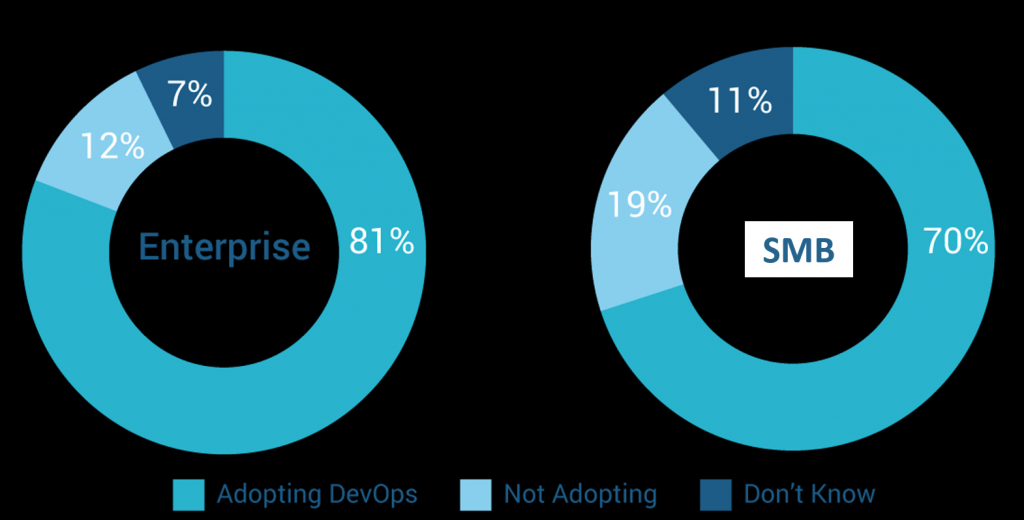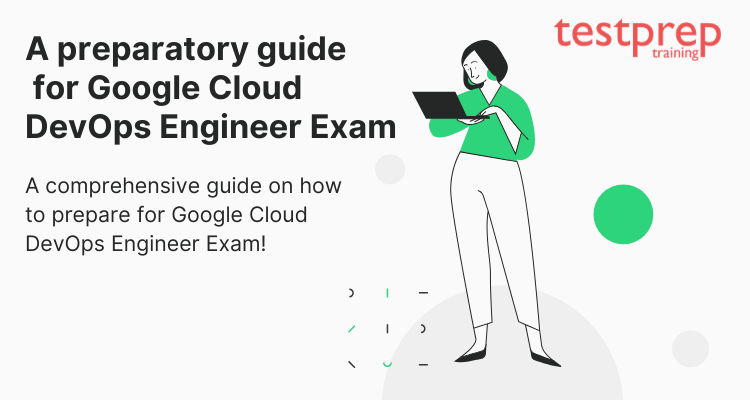Certifications have become very essential for career development. A Professional Cloud DevOps Engineer’s job is to make sure that software development operations run smoothly while balancing service reliability and speed. They are experts in using the Google Cloud Platform to create pipelines for delivering software, deploy and keep an eye on services, and handle and learn from incidents. We need to adopt ‘excellence’ as a survival mechanism in the corporate industry. Therefore, certifications help us to get an edge over others and makes our performance better. In today’s world, businesses prefer to hire certified professionals, and certifications demonstrate your dedication, commitment to goals, and your drive to achieve them.

The certifications like Google Cloud DevOps Engineer Exam can be difficult to crack without proper guidance. This kind of certifications can help you in scoring your dream job and further, climb up on the corporate ladder. So, if you are planning to crack the Google Cloud DevOps Engineer Exam, this is the right destination for you. This article will serve you with all the details related to the exam along with the handful of preparatory resources. Let us get underway.
Why Google Cloud DevOps Engineer Exam?
A Professional Cloud DevOps Engineer ensures that the development process runs smoothly, balancing service reliability and delivery speed. The need for Certified Google DevOps Professionals is growing rapidly.

Now when we see the results clearly 81% of the enterprises are using DevOps practices along with 70% of small to medium businesses. Moreover, there are various reasons for such an increase in the adoption of DevOps practices including –
- Firstly, the automated delivery pipelines help the release of small features more frequently
- Secondly, the increased adoption of Microservice architecture
- Next, Reduced failure rate of new releases
- Also, the shortened lead time between fixes
- Lastly, faster mean time to recovery in the event of new release crashing
Let us now move to exam overview for the basic details of the exam to help you prepare for the final exam.
Exam overview
The Google Cloud DevOps Engineer Exam consists of 50 questions which have to be answered in 120 minutes. The exam costs $200 exclusive of taxes, taxes will be applicable as per region and prices may also vary from time to time. Also, the exam is available only in English language and the type of questions asked are multiple choice and multiple select questions. Subsequently, there are no prerequisites for the exam however google recommends experience of three+ years of industry experience including one+ years managing solutions on GCP.
Exam Details
| Exam name | Google Cloud DevOps Engineer Exam |
| Exam code | GCP |
| No. of questions | 50 |
| Language available | English |
| Experience required | Three+ years of industry experience including one+ years managing solutions on GCP |
| Question format | Multiple choice and multiple select |
| Exam price | $200 plus taxes |
| Registration platform | Google cloud Webassessor |
Related Exam Details
You can register for the exam by creating a new google Webassessor account. You have to select your exam and then your language and also test center. There is no fixed passing score for the Google Cloud DevOps Engineer Exam as the panel determines the passing score after the exam.
Now that we are done with the details of the exam, let us move forth to the syllabus in detail.
Google Cloud DevOps Engineer Exam Course Outline
There are 5 major testing areas as prescribed by google. The testing areas are as follows:
Topic 1: Bootstrapping a Google Cloud organization for DevOps
1.1 Designing the overall resource hierarchy for an organization. Considerations include:
- Projects and folders
- Shared networking
- Identity and Access Management (IAM) roles and organization-level policies
- Creating and managing service accounts
1.2 Managing infrastructure as code. Considerations include:
- Infrastructure as code tooling (e.g., Cloud Foundation Toolkit, Config Connector, Terraform, Helm)
- Making infrastructure changes using Google-recommended practices and infrastructure as code blueprints
- Immutable architecture
1.3 Designing a CI/CD architecture stack in Google Cloud, hybrid, and multi-cloud environments. Considerations include:
- CI with Cloud Build
- CD with Google Cloud Deploy
- Widely used third-party tooling (e.g., Jenkins, Git, ArgoCD, Packer)
- Security of CI/CD tooling
1.4 Managing multiple environments (e.g., staging, production). Considerations include:
- Determining the number of environments and their purpose
- Creating environments dynamically for each feature branch with Google Kubernetes Engine (GKE) and Terraform
- Anthos Config Management
Topic 2: Building and implementing CI/CD pipelines for a service
2.1 Designing and managing CI/CD pipelines. Considerations include:
- Immutable artifacts with Container Registry (Google Documentation: Help secure software supply chains on Google Kubernetes Engine, Managing images)
- Artifact management with Artifact Registry
- Deployment to hybrid and multi-cloud environments (e.g., Anthos, GKE)
- CI/CD pipeline triggers
- Testing a new application version in the pipeline
- Configuring deployment processes (e.g., approval flows) (Google Documentation: Setting up a CI/CD pipeline for your data-processing workflow)
- CI/CD of serverless applications
2.2 Implement CI/CD pipelines:
- Auditing and tracking deployments (e.g., Artifact Registry, Cloud Build, Google Cloud Deploy, Cloud Audit Logs)
- Deployment strategies (e.g., canary, blue/green, rolling, traffic splitting)
- Rollback strategies
- Troubleshooting deployment issues
2.3 Managing CI/CD configuration and secrets. Considerations include:
- Secure storage methods and key rotation services (e.g., Cloud Key Management Service, Secret Manager) (Google Documentation: Cloud storage)
- Secret management
- Build versus runtime secret injection
2.4 Secure the deployment pipeline:
- Vulnerability analysis with Container Registry (Google Documentation: Getting vulnerabilities and metadata for images)
- Binary Authorization (Google Documentation: Binary Authorization)
- IAM policies per environment (Google Documentation: Policy)
Section 3: Applying site reliability engineering practices to a service
3.1 Balancing change, velocity, and reliability of the service. Considerations include:
- Discovering SLIs (e.g., availability, latency)
- Defining SLOs and understanding SLAs
- Error budgets
- Toil automation
- Opportunity cost of risk and reliability (e.g., number of “nines”)
3.2 Managing service lifecycle. Considerations include:
- Service management (e.g., introduction of a new service by using a pre-service onboarding checklist, launch plan, or deployment plan, deployment, maintenance, and retirement)
- Capacity planning (e.g., quotas and limits management)
- Autoscaling using managed instance groups, Cloud Run, Cloud Functions, or GKE
- Implementing feedback loops to improve a service
3.3 Ensuring healthy communication and collaboration for operations. Considerations include:
- Preventing burnout (e.g., setting up automation processes to prevent burnout)
- Fostering a culture of learning and blamelessness
- Establishing joint ownership of services to eliminate team silos
3.4 Mitigating incident impact on users. Considerations include:
- Communicating during an incident
- Draining/redirecting traffic
- Adding capacity
3.5 Conducting a postmortem. Considerations include:
- Documenting root causes
- Creating and prioritizing action items
- Communicating the postmortem to stakeholders
Topic 4: Implementing service monitoring strategies
4.1 Manage logs:
- Collecting structured and unstructured logs from Compute Engine, GKE, and serverless platforms using Cloud Logging
- Configuring the Cloud Logging agent
- Collecting logs from outside Google Cloud
- Sending application logs directly to the Cloud Logging API
- Log levels (e.g., info, error, debug, fatal)
- Optimizing logs (e.g., multiline logging, exceptions, size, cost)
4.2 Managing metrics with Cloud Monitoring. Considerations include:
- Collecting and analyzing application and platform metrics
- Collecting networking and service mesh metrics
- Use metric explorer for ad hoc metric analysis (Google Documentation: Metrics Explorer)
- Creating custom metrics from logs
4.3 Managing dashboards and alerts in Cloud Monitoring. Considerations include:
- Creating a monitoring dashboard
- Filtering and sharing dashboards
- Configuring alerting
- Defining alerting policies based on SLOs and SLIs
- Automating alerting policy definition using Terraform
- Using Google Cloud Managed Service for Prometheus to collect metrics and set up monitoring and alerting
4.4 Managing Cloud Logging platform. Considerations include:
- Enabling data access logs (e.g., Cloud Audit Logs)
- Enabling VPC Flow Logs
- Viewing logs in the Google Cloud console
- Using basic versus advanced log filters
- Logs exclusion versus logs export
- Project-level versus organization-level export
- Managing and viewing log exports
- Sending logs to an external logging platform
- Filtering and redacting sensitive data (e.g., personally identifiable information [PII], protected health information [PHI])
4.5 Implementing logging and monitoring access controls. Considerations include:
- Restricting access to audit logs and VPC Flow Logs with Cloud Logging
- Restricting export configuration with Cloud Logging
- Allowing metric and log writing with Cloud Monitoring
Topic 5: Optimizing service performance
5.1 Identify service performance issues:
- Using Google Cloud’s operations suite to identify cloud resource utilization
- Interpret service mesh telemetry (Google Documentation: The service mesh era)
- Troubleshooting issues with compute resources
- Troubleshooting deploy time and runtime issues with applications
- Troubleshooting network issues (e.g., VPC Flow Logs, firewall logs, latency, network details (Google Documentation: VPC Flow Logs overview, Using VPC Flow Logs, Using Firewall Rules Logging)
5.2 Implementing debugging tools in Google Cloud. Considerations include:
- Application instrumentation (Google Documentation: Cloud Monitoring)
- Cloud Logging
- Cloud Trace
- Error Reporting
- Cloud Profiler
- Cloud Monitoring
5.3 Optimize resource utilization and costs:
- Preemptible/Spot virtual machines (VMs)
- Committed-use discounts (e.g., flexible, resource-based)
- Sustained-use discounts
- Network tiers
- Sizing recommendations
Let us now move to a very important part i.e. exam preparation resources.
Preparatory resources for Google Cloud DevOps Engineer Exam
There are numerous resources available for preparation but you have to be very careful for choosing the best for you as they will determine your performance in the exam. Let us look at handful of them –
Official Site and Resources Available
The official site, firstly, provide insights to various aspects of the exam. Make sure to visit the official site before the exam to gather the information about the exam and subsequently, during your preparation days too to keep yourself updated regarding the exam. The official site also provides you with various online courses options, instructor led training options and hands-on practice material. These are the one of the reliable and best material you can use for the preparation. You can also use the cloud platform to clear your doubts and to extend your knowledge regarding any matter.
Books are the Best Friends
Books are the most preferred resource by many of us. They are handy and serve as best resource to many of us. You can refer to any of the book or e-book that you find comfortable to read and understand. Also, books are easily available in the libraries or the book stores near you. Some of the books that you can refer to for the Google Cloud DevOps Engineer Exam are:
Firstly, Google Professional Cloud DevOps Engineer 33 Exam Prep Questions
Secondly, Terraform: Up & Running: Writing Infrastructure as Code
Thirdly, Kubernetes – A Complete DevOps Cookbook: Build and manage your applications, orchestrate containers, and deploy cloud-native services
Subsequently, Hands-On Security in DevOps: Ensure continuous security, deployment, and delivery with DevSecOps
Finally, Hands-on Security in Devops
Online Courses and Instructor-led Trainings
Online courses and instructor led trainings are one of the best ways to prepare. This kind of classes are interactive enough and helps you in clearing your doubts. You can also find test series with them which will help you in improving. These classes also provide you with very good and reliable content which can be used for preparing. There are many educational sites which provide you with reliable classes and 100% exam pass guarantee.
Practice Exams and Test Series
These are the most essential part of the preparation. Practising with the help of sample papers and taking test series to improve your accuracy and way of answering the questions. They also help you determine the various areas of the preparation which are weak and need more practice. On the other hand, it also helps you find your strengths. In short, practice papers and test series help you in taking your SWOT analysis. There are many reliable sites that provide you with good content. So, let’s Start Practicing for Google DevOps Engineer Exam!
Other Reliable Resources for Preparation
There are many other resources as libraries, e-labs and classroom classes etc. which can help you in preparing well. Most importantly, you have to pay more focus on the self-study part for succeeding. Make your strategy and also try to implement that as strictly as possible.
Now that you are well versed with the preparatory resources and all the details of the exam, therefore, let us now wind up so that you shall start preparing to qualify the exam.
Expert Advice
Therefore, to sum up, achieving the certification is not so challenging task if you take the preparation part with full dedication and pay full efforts to crack the exam. The certification will add value to your skill set and will also help you stand out in the crowd. This Google Cloud DevOps Engineer Exam will surely upgrade your resume and help you in achieving your dreams.
All the best.


